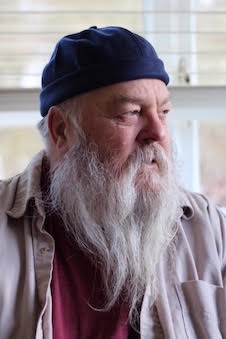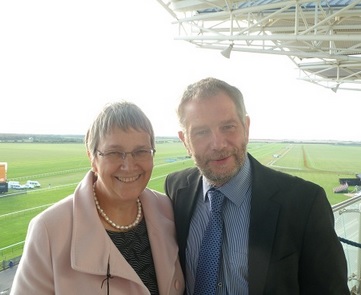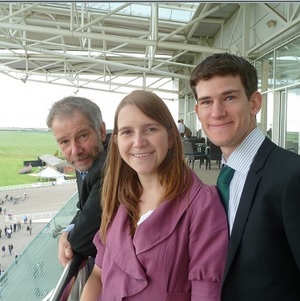Imagine attending Newmarket races on Friday 4th May 1838.
How would your experience differ from someone attending a meeting at the same racecourse in Spring 2020?
This presentation seeks to illustrate the major changes and advancements made over the past 2 centuries. It examines the challenges faced by different tiers of society before attending the 1838 meeting. It looks at how their thirsts were quenched and hunger appeased. It shows how they were catered for if they enjoyed a bet and, at the end of the day, how they departed the course safely.
You will be able to experience all aspects of the race day held on Friday 4th May 1838, choosing from a buffet of titbits, and even experiencing 11 races, despite there being no footage of the races which were held on that day.
The best way to benefit from this presentation is to consider some of the questions raised below before making your way to the buffet table.
However, if you would prefer to just access the presentation immediately then CLICK HERE
1. What was the weather like in May 1838 leading up to race day and on the day itself?
2. In 1838 who might be categorized as being 'Upper Crust', who would comprise the 'middle men' and who would be classed as 'lowly folk?
3. What would breakfast consist of for each class?
4. What did each class of society wear to the races?
5. What modes of transport were in common usage in 1838?
6. How would the Upper Crust have travelled to the races?
7. Who owned the Cheveley Park Estate in 1838 and who might they have entertained during race week?
8. How would the middle men have travelled to Newmarket, given that trains did not arrive in Newmarket until 1848?
9. How would the lowly folk have made their way to Newmarket?
10. Locate 3 lowly Fenfolk in the presentation, Alan Church, Cyril Dring and Deary Tinkler who attended in 1838. Their descendants have been traced and attended the 2020 meeting, but how have their fortunes changed?
11. What was the Fenfolk character Michael's version of the ITV7?
12. Why were no Cambridge University students in attendance at Newmarket in 1838?
13. Where did the stagecoaches to Newmarket depart from; where did they call at on the way; how long was the journey time?
14. On one stagecoach journey in May 1838 the coach was held up. How was the incident dealt with?
15. Which of the Newmarket Inns of 1838 still remain today?
16. Who were the landlords of each of the Newmarket Inns?
17. What information was included in racecards of 1838?
18. Who were the owners, trainers and jockeys of the day?
19. Where would much of the betting have taken place the evening before race day?
20. Which sporting paper informed racegoers in 1838?
21. What race form would have been available in 1838 to influence who to bet on?
22. What important races were staged in Newmarket in the days and weeks leading up to the meeting in May 1838?
23. Which grandstands were operational in 1838?
24. In 2020 just one winning post was used at the Spring meeting even though races were run over a variety of distances. How many winning posts were used at the 1838 meeting, and what problems did this pose for racecgoers?
25. There was just one Judge at the 1838 meeting, so how did he move from one winning post to the next?
26. Where did the majority of the betting take place on the racecourse?
27. Who were the main bookmakers of the day and how did they operate?
28. What novel betting method did Crutch Robinson use in races 3 and 4, a method in common usage in Australia until about 1900?
29. What other activities were practiced by 'sharpsters' eager to hoodwink unwary punters?
30. In 2020 who might fall into the 'sharpsters' category?
31. The most important part of any race day are the races, but no footage remains of the 1838 races. How has that problem been overcome?
32. When you enjoy watching the races, look carefully at the crowd in 2 different ways. Firstly, examine the background crowd, where the dress changes from Victorian, to Edwardian and on to the present day as the race progresses.
33. However, look at the crowd a second time, when you will spot a dozen key racegoers in the crowd. The key characters reflect owners, trainers, jockeys, racing characters, bookmakers and commentators from 1838 to 2020. It is particularly noticeable that nobility predominated in 1838, while by 2020 women have an equal role to play.
34. Which Derby favourite ran on Friday 4th May 1838, although in the end it did not contest the Epsom Derby?
35. Who was the judge at Newmarket in 1838, and what was the family tradition when marrying?
36. How would the Upper Crust, and their entourage, travel to the races, and who might be in their party?
37. One duke, present in 1838, remembered the final 6-mile race at Newmarket. What would have been the difficulties in tracking the running of a 6-mile race and how were they overcome?
38. Who did the Duke think had won the final 6-mile race at Newmarket, but which horse actually won that last race?
39. Which musicians entertained the crowd in 1838, and how are Newmarket race days boosted in 2020 by staging a musical event in the evening?
40. Which bookmaker became known as the 'leviathan of the ring' and what was his first experience of Newmarket?
41. How would thirst have been quenched and hunger appeased at the 1838 racecourse for the different tiers of society?
42. What did the Upper Crust ladies wear to the races?
43. Who won the 1838 best dressed lady competition, and what prize might have been awarded to the lady who won a similar competition in 2020?
44. Reflecting fashions across time, why might someone be dressed as a chicken in 2020?
45. Why, after race 6, did the 1838 meeting end in disappointment, and how might this message have been relayed to the public?
46. At the end of the racing day, how did each tier of society depart from the racecourse?

TONY BOSTROM (Technical wizard)
Tony, now retired, spent most of his professional life in two industries; the first 15 years working in oil exploration in the UK, Oman, Spain and the USA. The next 15 years were spent in technology, first designing packet switch networks; later working as the Commercial Manager in a major telecommunications distribution agreement.
Although he used computers for work from 1989, he was never employed in a graphic design, or website creation role, but he started to pursue these things as a hobby as soon as he discovered Apple Macintosh computers in 1989. He moved to Brill, Buckinghamshire, in 1990, and began using graphics for the local parish magazine, church fund raising events and other village related community causes, whilst also creating websites for a variety of people, including caterers, jewellery makers and a local musician. He retired from professional life in 2003, but continued with graphics as a hobby, working for six years on a series of children's books and animated short movies. More recently he has worked closely with John Slusar on the 4 volumes of 'Racecourses Here Today and Gone Tomorrow', and helped him with a number of illustrative sections of his Greyhoundderby.com website. He has learned a great deal about the world of racing, even though he has no interest of any kind in the sport. He has found the most recent project, looking at Newmarket races and comparing 1838 to today, to have been most fascinating because it piques his interest in social history, and history of all kinds. He finds the social landscape, so well described by John, to be deeply fascinating. He is especially interested in the comparison of the social structure of the 19th century, and its manifestation today. It has been a project which has allowed him to use software he had never previously used, forcing him to work out how best to present such a vast amount of interesting material. He has found it to be huge fun.

JOHN SLUSAR (Owner of greyhoundderby.com)
John was born in October 1953 in the village of Warboys, which lies in the heart of the Cambridgeshire Fens, and first experienced his love of mathematics when arranging small potatoes in ever increasing circles in the Fens when he was just three. When he was 10 his mother, Linda, became hospitalised with osteomyelitis and he was sent to Ilkeston to spend the summer with his Aunt Janet and Uncle Bill. Uncle Bill loved his racing and first took John to Nottingham races in 1963 where he backed Dunme, ridden unsuccessfully by Lester Piggott, in the Nottingham Stewards Cup. However, he did end the day winning on Peruvian Silk and was hooked for life. He chose a mathematics degree at York University, because it had the finest racecourse in the country in his opinion, and then began teaching at St Bartholomew's School, Newbury because of its top-class racecourse. Whilst at St Bart's he met his wife, Priscilla, and fondly remembers taking her to the races when she asked whether she should take a book, because 30 minutes between races seemed a long time. They married in 1980 and lived in Burton on Trent, close to Uttoxeter racecourse, for the next 34 years while he taught maths. In 2000 he developed his website greyhoundderby.com as his millennium project, and has been working on it ever since; it now contains over 80,000 pages of sporting information, mostly horse racing and greyhound racing. Priscilla retrained at Cambridge University as a vicar between 2008 and 2010, and they moved to Brill, via Codsall, where he met Tony Bostrom. Having collected interesting stories about former racecourses for 15 years, John wrote his 4 volumes of 'Racecourses Here Today and Gone Tomorrow' in 2016 and, after favourable reviews in The Times and Racing Post, they have become treasured possessions by many racegoers. His 3 latest racing projects are writing the complete history of all Newmarket racing stables, the complete history of each of Royal Ascot's famous races, and a presentation of Newmarket races from 1838 to 2020.

If you have positive comments about the presentation then forwarded them to John Slusar at johnwslusar@gmail.com, while if you have adverse comments to make then write them on a piece of paper and send them up your chimney to Santa Claus who will deliver them to John on Christmas Day.